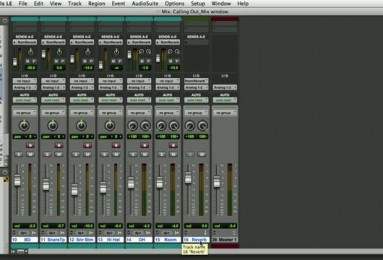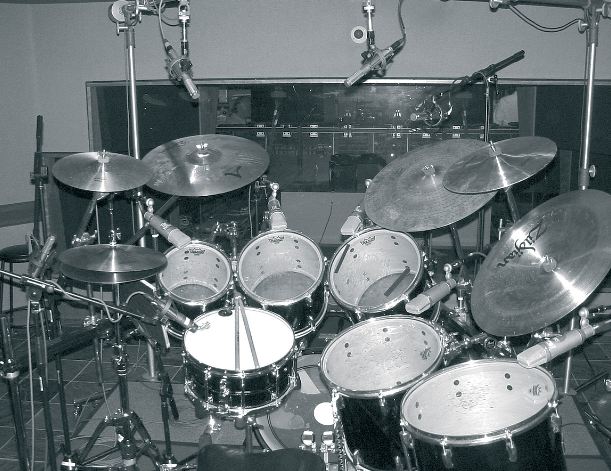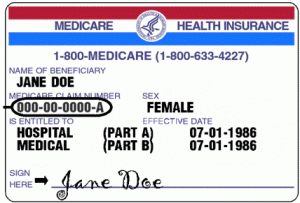Using aux input faders to create a subgroup in Pro Tools.
Why use sub groups when mixing?
- Stem mixing or audio mastering. By creating sub mixes, you can more easily control the blend of each section or instrument. Often times, you can also send stems to mastering so that the mastering engineer can ‘sub master’ each stem, then combine into the final product. (Tend to get a higher RMS this way, greater “loudness”, and also give the mastering engineer more control to fix things to each section of the mix rather than sending it back or making concessions.)
- Parallel Compression. If you’re creating subgroups via sends rather than outputs. But be careful. A lot of people don’t pay attention to the phase issues that can result from it.
- Post-Production. Post production (mixing for film, tv, etc.) uses stems like it’s sour apples with extra crunchy peanut butter. Since there are usually so many pieces to a film mix, they get subgroups down into stems first to be more manageable (score, ADR, FX, etc.)
 Difference between subgroup and mix group: Subgroups actually have signal passing through them, which means you can do extra signal processing while mixing: EQing, compressing, etc. It’s a way to progressively build your mix. (ex: as you mix, and as you’re almost done you say to yourself, “the drums are too dark”. If you are using a subgroup you brighten them with an EQ, but if you’re not, then you have to do it on every channel of the drums, which most likely will not sound very good. Sub groups let you do that. Mix groups generally only “group” basic automation parameters (faders and mutes)
Difference between subgroup and mix group: Subgroups actually have signal passing through them, which means you can do extra signal processing while mixing: EQing, compressing, etc. It’s a way to progressively build your mix. (ex: as you mix, and as you’re almost done you say to yourself, “the drums are too dark”. If you are using a subgroup you brighten them with an EQ, but if you’re not, then you have to do it on every channel of the drums, which most likely will not sound very good. Sub groups let you do that. Mix groups generally only “group” basic automation parameters (faders and mutes)
Creating a sub group in Pro Tools (or basically any DAW system)
- Select all the audio tracks you want in the subgroup (command click on each, or click the first, hold shift, then click the last, assuming they’re all bunched together in your mix window)
- Once selected, hold down shift and option keys (key translation: apply to all selected), THEN change the output of one of them to an unused audio bus in the system. Since you’re holding shift + option, changing the output of one of the selected faders will change them all.
- Create a stereo aux input fader.
- Make the input the same bus as the output of the audio faders you just changed above. Boom, you should see and hear signal.
- Solo isolate the aux input fader that’s your subgroup (that way you can, for example, solo the snare track when in SIP solo mode and still hear it if it’s routed to the subgroup).
Common use of subgroups when mixing:
- Drums
- Background vocals / hook vocal stacks
- Rhythm guitars
- Horn sections
- String sections
- Keys
Advertisement





















